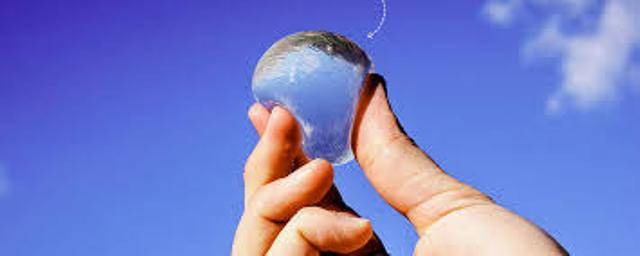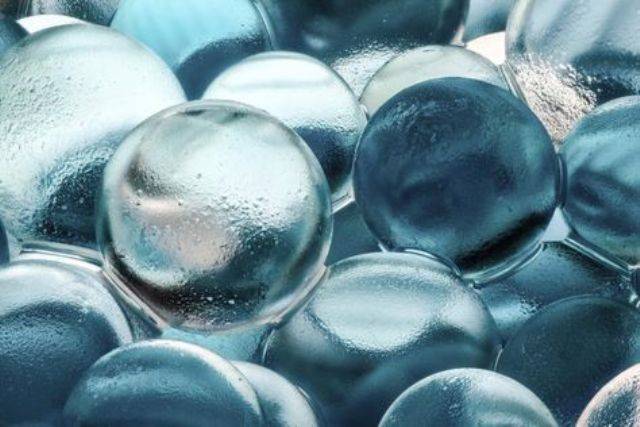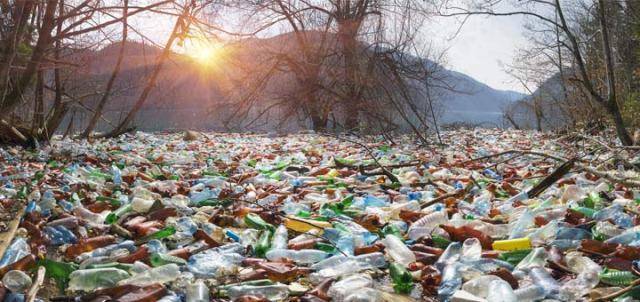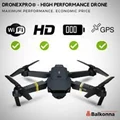
'Edible water bottle' that hopes to replace the millions of plastic bottles thrown away every year has raised over £500,000 in a crowdfunding campaign.
The biodegradable and natural membrane which can be fully swallowed and digested, by the name "Ooho" can be used in the same way as drinking water.
The product is made from a seaweed extract and is tasteless, although flavours can be added to it.

The idea was first invented by Skipping Rocks Lab, the company behind it, was founded by three London-based design students and aims to make a series of sustainable projects of which "Ooho" is the first.
It plans to trial the use of the balls this year and then introduce them at major events such as marathons.
Composition
The edible water bottle is a blob-like water container made from sodium alginate gel. The biodegradable blob was created by Skipping Rocks Lab in an attempt to make a more environmentally friendly alternative to single-serving plastic bottles. The container, named "Ooho" by its creators, encloses a small volume of water in a membrane made from brown algae and calcium chloride. The manufacturing process is covered under a Creative Commons license, making the recipe freely distributed and readily available for anyone to use.

These ingredients are readily available online. You can also find them in grocery stores that carry ingredients for molecular gastronomy.
Materials and equipment:
- Water
- 1 gram sodium alginate
- 5 grams of calcium lactate
- Large bowl
- Smaller bowl
- Hand mixer
Spoon with a rounded bottom (soup spoon or round measuring spoon works great). The size of the spoon determines the size of your water bottle. Use a large spoon for big water blobs. Use a tiny spoon if you want little caviar-sized bubbles.

Make your own Edible Water Bottle
In a small bowl, add 1 gram of sodium alginate to 1 cup of water.
Use the hand mixer to make sure the sodium alginate is combined with the water. Let the mixture sit for about 15 minutes to remove any air bubbles. The mixture will turn from a white liquid to a clear mixture.
In a large bowl, stir 5 grams of calcium lactate into 4 cups of water. Mix well to dissolve the calcium lactate.
Use your rounded spoon to scoop up the sodium alginate solution.

Gently drop the sodium alginate solution into the bowl containing the calcium lactate solution. It will immediately form a ball of water in the bowl. You can drop more spoonfuls of sodium alginate solution into the calcium lactate bath. Just be careful the water balls don't touch each other because they would stick together. Let the water balls sit in the calcium lactate solution for 3 minutes. You can gently stir around the calcium lactate solution if you like.
(Note: the time determines the thickness of the polymer coating. Use less time for a thinner coating and more time for a thicker coating.)
Use a slotted spoon to gently remove each water ball. Place each ball in a bowl of water to stop any further reaction. Now you can remove the edible water bottles and drink them. The inside of each ball is water. The bottle is edible too - it's an algae-based polymer.

Using Flavors and Liquids Other Than Water
There is always a scope to add flavours to the drink so as to make it favourable to the user. As you might imagine, it's possible to color and flavor both the edible coating and the liquid inside the "bottle". It's okay to add food coloring to the liquid. You can use flavored beverages rather than water, but it's best to avoid acidic drinks because they affect the polymerization reaction. There are special procedures for dealing with acidic beverages.
















